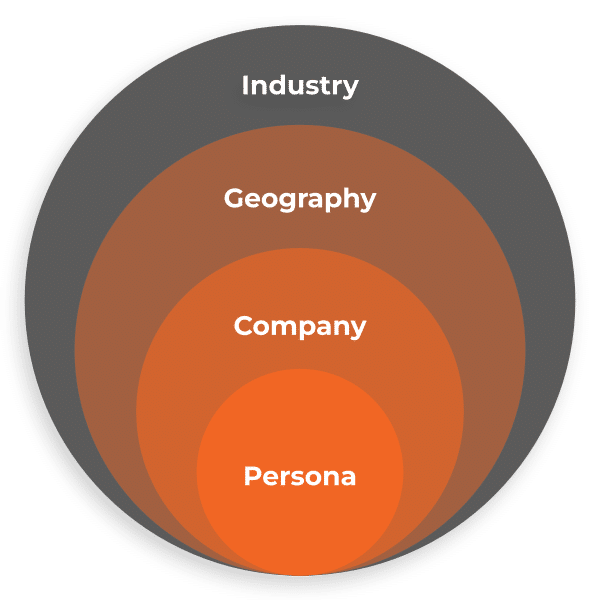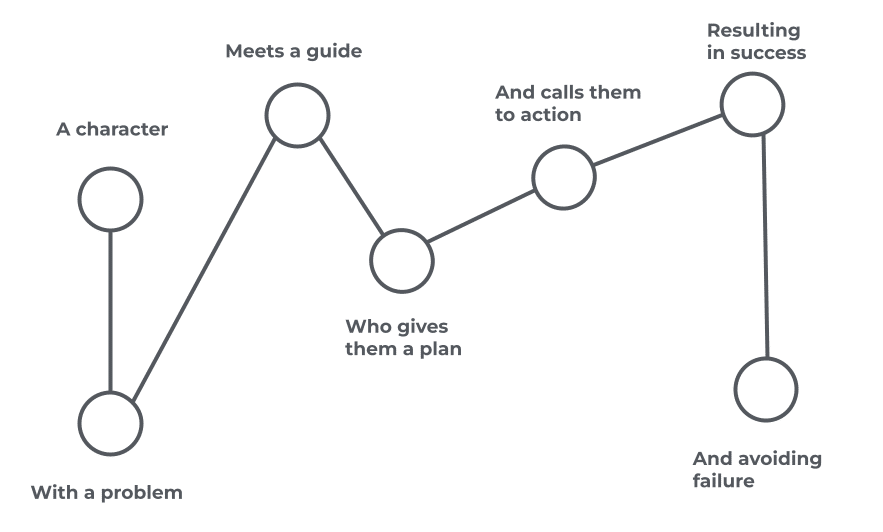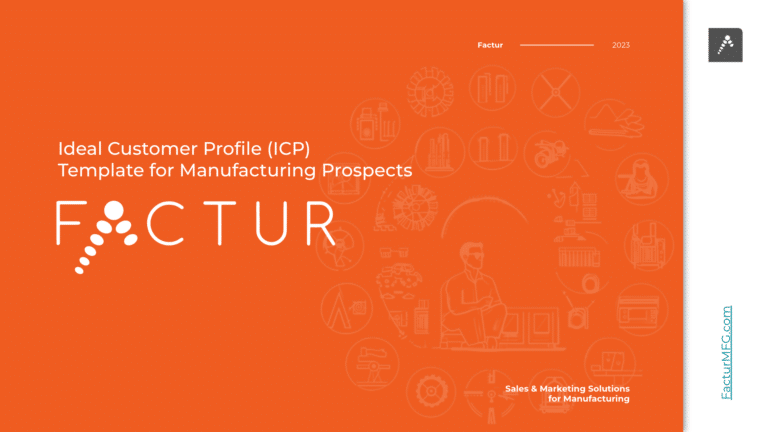We’ve said it before, a manufacturing marketing strategy is more important than ever. And content marketing for manufacturers is a key component in this strategy, serving as a powerful tool to engage audiences, demonstrate expertise, and drive leads.

For manufacturers, content creation is not just about filling web pages–it’s a strategic approach to attract the right manufacturing companies. By sharing insights on advanced manufacturing techniques or showcasing success stories, you not only demonstrate your expertise but also set yourself apart as a leader in your field.
This blog will guide you through essential content marketing strategies that are specifically tailored to resonate with B2B manufacturers, helping you to develop a strong content marketing plan that aligns with your business goals and attracts the ideal manufacturing clients.
Content Marketing for Manufacturers: Why it Matters
B2B Manufacturers can’t afford to overlook the power of content in 2024. Let’s look at the statistics.
According to Demand Gen’s B2B Buyer’s Survey Report, 62% of B2B buyers said that a web search was one of their first three resources used to learn about a solution.
Today’s average B2B buyer progresses nearly 60% through the buying process before even contacting a sales representative. This suggests that prospects are forming opinions about your business and services based on the information they find online.
A strong content marketing strategy plays a big part for manufacturers in building brand awareness, establishing trust and rapport with prospects, and driving website traffic. Thoughtfully generated and curated content captures buyer attention and maintains their interest throughout the purchase process.
Let’s discuss some steps you can take to develop a strong manufacturing content marketing strategy.
1. Know Your Audience
Before anything else, understand who you’re writing for. Different audiences have different needs.
As a B2B manufacturer, you have a niche customer base, so you need to pinpoint your buyer personas with an Ideal Customer Profile (ICP). The ICP helps you identify the specific needs and challenges of your potential customers and buyer personas.
Ideal Customer Profile (ICP) Template for Manufacturing
Develop your Ideal Customer Profile (ICP) to create the clarity your team needs as you execute sales & marketing tactics.
Once you’ve defined your ICP, segment your ideal audiences into distinct personas. For example, these could be aerospace contractors needing high-precision parts, automotive manufacturers looking for cost-efficient fabrication solutions, or small-scale industrial suppliers needing quick, on-demand production capabilities.
Align your content strategy with these personas. For instance, a blog post for aerospace contractors could focus on your shop’s precision and compliance with industry standards, while content for automotive manufacturers might highlight your efficiency and scalability.

This targeted approach helps you create content that resonates with the specific pain points and interests of each segment and will bring a diverse and relevant audience to your website.
2. Set Specific Goals for Your Content
Set objectives for each piece of content. The more precise and quantifiable your goals are, such as increased web traffic from specific industries or improved engagement with potential clients in niche sectors, the more effectively you can steer your content marketing strategy toward tangible business outcomes.
For example, if your goal is to increase brand awareness, you might create content that highlights your unique expertise or innovation. This could be an in-depth article on the latest industry trends or a case study showcasing a successful project.
If your goal is lead generation, you might focus on content that addresses specific problems your potential customers face, offering solutions that your products or services provide. This could be a detailed guide or a comparison chart that helps potential clients understand why your solution is the best fit for their needs.
Certain types of content can significantly streamline the buying process and shorten the sales cycle for manufacturers. For example, detailed product guides and comparison charts help potential buyers understand the specifics and advantages of your products quickly, aiding in faster decision-making. These types of content should provide clear, concise information that addresses common questions and concerns, reducing the time sales teams spend on educating clients.
Additionally, case studies and customer testimonials are powerful in building trust and credibility. When potential customers see real-world examples of your products or services in action, particularly how they’ve solved similar challenges, it boosts their confidence in making a purchase. This direct insight into the benefits and applications of your offerings can expedite the buyer’s journey from interest to final decision.
3. Engage and Add Value
Your content should not just inform, but also engage.
With the abundance of content available, it’s important to bring a fresh and relevant perspective that resonates with the specific interests of your target audience.
While not every blog post or content piece needs to be groundbreaking, incorporating elements that cater to the manufacturing industry’s interests can significantly enhance your content’s appeal and search engine performance. Consider including:
- Infographics: Display complex data, like machining tolerances or metal strength ratings, in an easy-to-understand format.
- Video Content: Showcase your machinery in action or provide a behind-the-scenes look at the process.
- Product Screenshots: If applicable, include high-quality images, like CAD designs or finished components, to give a tangible sense of your work.
- FAQs: Address common questions, like CNC machining capabilities or fabrication techniques, helping potential buyers understand the value of your services.
- Charts and Graphs: Visualize information, like production timelines or material efficiency, to highlight your shop’s effectiveness.
- Interactive Features: Engage your audience with polls about industry trends and quizzes to test their knowledge.
By integrating these elements, you not only provide value but also create content that’s more likely to engage and retain the interest of manufacturers and industrial clients, thereby strengthening your position in the market.
4. Focus on Storytelling
Your content shouldn’t feel like a sales pitch. Use storytelling to connect with your audience on a deeper level. Share real-life examples of how your services have helped manufacturers. Include customer testimonials that speak to the quality and precision of your work. Give a glimpse behind the scenes of your operations. This storytelling approach helps build trust and loyalty with your audience.
Incorporating the StoryBrand Framework
To enhance our storytelling approach, we utilize the StoryBrand framework with our customers. This method centers on positioning the customer as the ‘hero’ of the story, with your business playing the role of the ‘guide’.
It’s about understanding the customer’s challenges and aspirations, and then clearly demonstrating how your services can help them overcome obstacles and achieve their goals.

By structuring your content in this way, you create a narrative that resonates more deeply with your audience, making them the focal point of the story. This leads to a more engaging, customer-centric message that not only informs but also inspires action.
5. Use Multiple Promotion Channels
Think about where your audience consumes content. Are they reading industry publications? Are they Googling questions to learn how to address their pain points? Are they on LinkedIn?
Maximize your reach by diversifying your content distribution across different platforms. This can include:
- Social media platforms for quick engagement
- Email newsletters to nurture leads
- Collaboration with industry influencers for broader reach.
- Paid ads for targeted visibility.
6. Optimize for Search Engines
Search Engine Optimization (SEO) is critical for manufacturing companies, especially if you serve a niche audience. Optimize your content so your website can be found when your ideal customer is looking for your services.
Including keywords in your content is a big element to being found on Google due to the way its search algorithm works. Here’s a basic explanation:
- Keywords as Search Queries: When people use Google, they type in words or phrases to find what they’re looking for. These words or phrases are known as ‘keywords’. If your content contains these keywords, it’s more likely to appear in the search results.
- Matching User Intent: Keywords help Google understand the topic of your content and how it relates to what users are searching for. By including relevant keywords, you signal to Google that your content addresses the specific queries or needs of users.
- Improving Visibility and Ranking: The more your content aligns with the keywords people are searching for, the higher Google is likely to rank it in search results. This means more visibility for your website or page among users searching for those terms.
- Driving Targeted Traffic: By using keywords specific to your industry, like ‘precision CNC machining services’ or ‘custom metal fabrication’, you attract more targeted traffic. This means the people who find your site are those looking for exactly what you offer, which can lead to higher engagement and conversion rates.
In this new world with generic AI content, Google is focused on rewarding helpful content. Be detailed and personal in your content. Instead of just explaining what you do or highlighting your processes, share stories about specific projects. Talk about the challenges you faced and how you solved them. This helps your content stand out and be more useful to your readers.
Google has quality guidelines, called E-E-A-T, that gives you insight into the criteria it looks for. It stands for Experience, Expertise, Authoritativeness, and Trustworthiness, and it’s essential for how Google ranks content:
- Experience: Share real-world experiences (e.g. for CNC machining or metal fabrication, detail the specific projects and solutions).
- Expertise: Demonstrate deep knowledge in your field. Discuss advanced techniques and industry innovations with educational content.
- Authoritativeness: Establish yourself as a credible source. Publish informative articles and participate in industry discussions.
- Trustworthiness: Build trust by being transparent and accurate. Include testimonials and certifications to enhance credibility.
7. Monitor and Analyze Performance
Regularly track your content’s performance. Use tools like Google Analytics to understand what’s working and what’s not. Pay attention to metrics like engagement rates, time on page, and conversion rates. This data will help you refine your strategy and improve future content.
Regularly evaluate your content’s relevance. If certain pieces aren’t attracting your ideal manufacturing clients, consider reworking them to better address your specific audiences. On the other hand, actively update and enhance your most successful content to maintain engagement and interest, ensuring it continues to meet the evolving needs of your clients in the dynamic manufacturing sector.
Can Your Manufacturing Marketing Strategy Afford to Ignore Content Creation?
As we wrap up our exploration of content marketing for manufacturers, you should ask yourself: Can your business afford to overlook the power of content in today’s digitally-driven market?
The strategies we’ve discussed are not just steps–they’re essential components in weaving a compelling narrative for your brand and improving your sales funnel. From understanding your target audience to optimizing for search engines, each strategy plays a big role in how prospective customers perceive and interact with your business.




